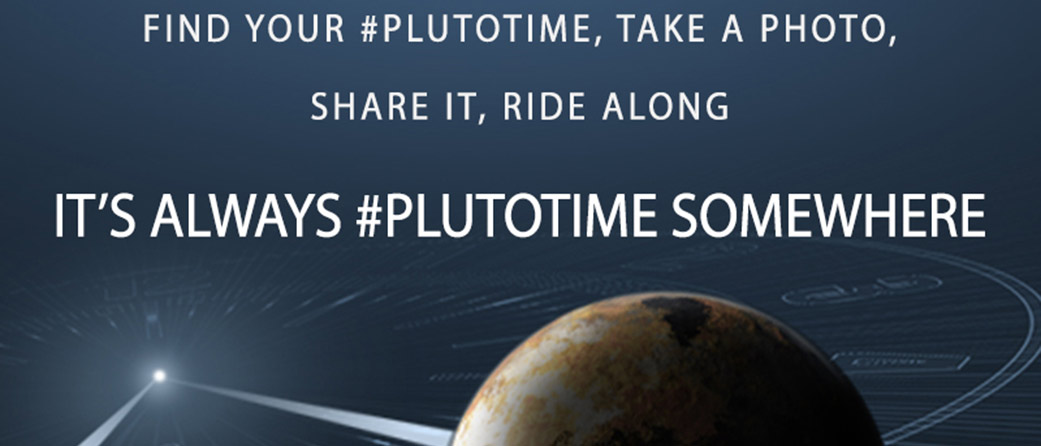Experience 'Pluto Time' with NASA's New Interactive Widget
Imagine you're one of those first Pluto explorers, stepping out of your lander. Pluto's moon Charon would hang motionless in your sky. The two are tidally locked, always presenting the same face to each other as they orbit over a 6.37 Earth-day period. But at only 12,200 miles (19,600 km) away — closer than Earth's geosynchronous satellites — Charon would appear eight times larger in Pluto's sky than the full moon appears from Earth. Pluto's other four moons — Nix, Hydra, Kerberos and Styx — would be visible as slowly moving stars, gradually rising and setting while Charon remained fixed in the heavens.
The Sun, some 3 billion miles (4.8 billion kilometres) away, would be the brightest object in Pluto’s sky but would look nothing like it does in our sky back on Earth. From Pluto’s surface, the Sun is a mere point of light only 250 times brighter than the Earth’s full Moon, with all that brightness packed into an icy, diamond-like point.
It is not as dark on Pluto as you might imagine, given you can read a book by the light of the full Moon on Earth. In fact, for a brief period during dawn and dusk each day, the illumination on Earth matches that of high noon on Pluto. A new NASA social media initiative is calling this “Pluto Time”. The idea is that if you step outside at this time on a clear day, everything around you will be as bright as the surface of Pluto at noon.

To participate and experience what Pluto Time looks like on Earth, NASA has built an interactive widget that provides your approximate "Pluto Time" on Earth, based on your location. Then take a photo during your Pluto Time and share it on social media with #PlutoTime. NASA will use the best images it collects from around the world and combine them into a mosaic image of Pluto and its moons to be released publicly in August.
To experience Pluto Time for yourself and see sample photos, visit: http://solarsystem.nasa.gov/plutotime







